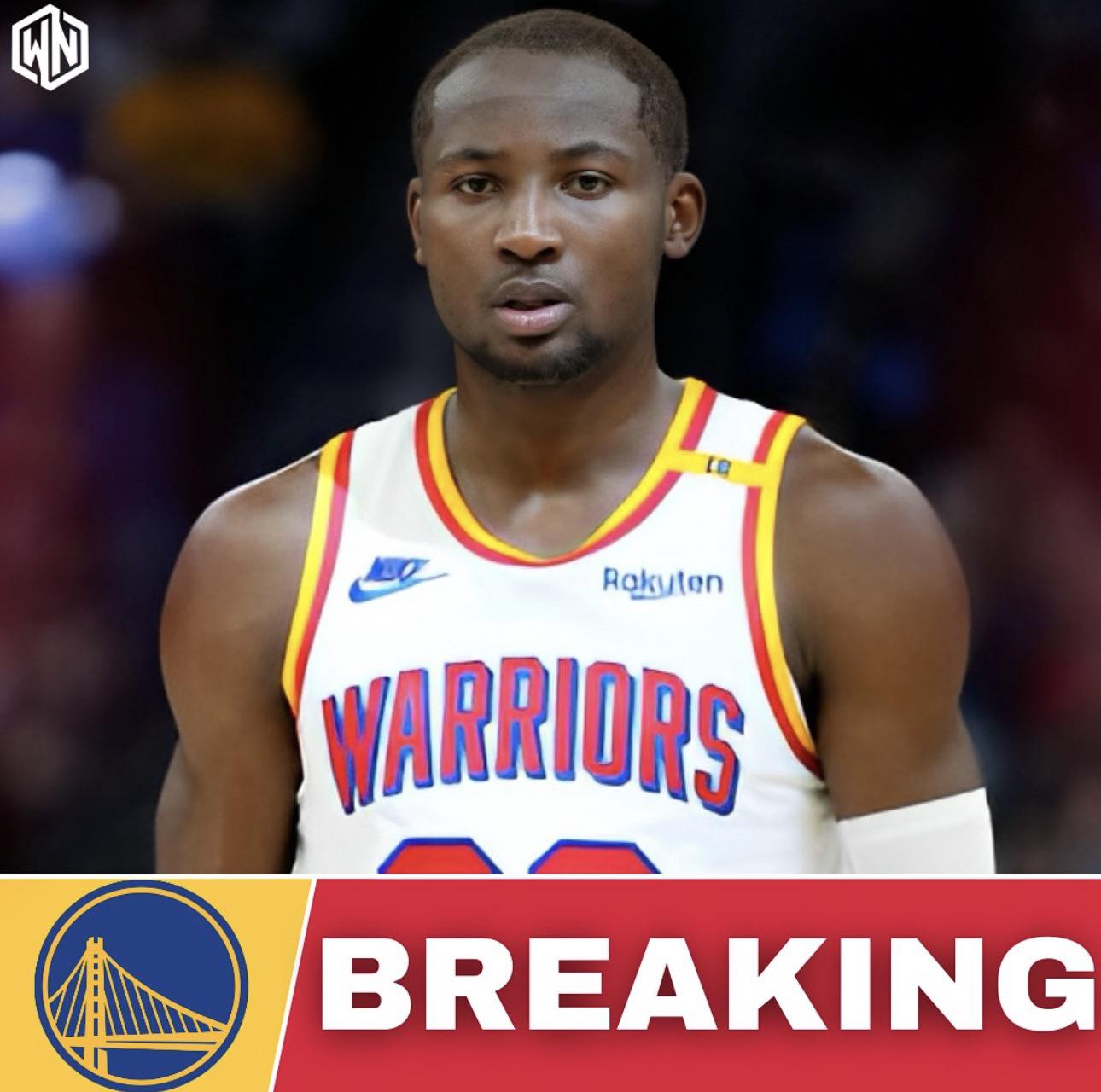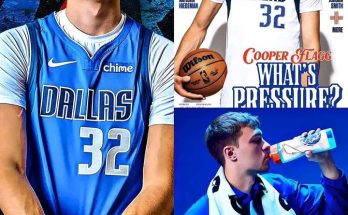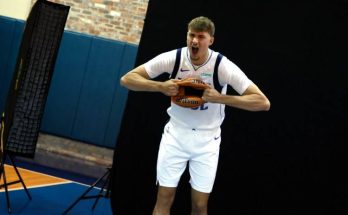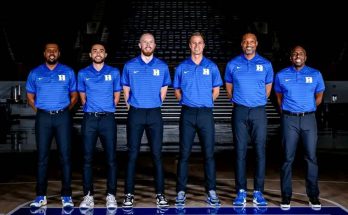The Golden State Warriors have made a definitive choice heading into the 2025-26 NBA season: Jonathan Kuminga will remain with the team. Despite months of speculation, trade rumors, and stalled contract negotiations, the franchise has decided not to move the 22-year-old forward and instead plans to carry him on the roster for the upcoming season. It’s a bold, calculated decision that may define not only the future of Kuminga’s career but also the trajectory of the Warriors’ championship window with aging stars like Stephen Curry and Draymond Green still at the helm.
At the center of the standoff was Kuminga’s contract situation. Coming off a strong season where he averaged over 15 points per game while flashing his trademark athleticism and growing offensive polish, Kuminga entered the summer as a restricted free agent. The Warriors extended a two-year, \$45 million offer, hoping to keep him on a short-term, team-friendly deal that gave them the option to reassess later. But Kuminga and his camp declined, citing dissatisfaction with the second-year team option and the lack of security in the deal. From his perspective, he had proven enough to warrant a longer, more stable commitment, especially given the potential interest from other teams around the league.
That interest was real. Several teams were reportedly engaged in sign-and-trade discussions, most notably the Sacramento Kings and the Phoenix Suns. These franchises, each looking to add youth and versatility to their rotations, saw Kuminga as a high-upside target worth pursuing. Sacramento’s offer was said to include a mix of veterans and draft picks, while Phoenix explored ways to move salary and create a package that would appeal to Golden State. But none of these proposals met the Warriors’ asking price. The organization remained steadfast in its valuation, unwilling to trade Kuminga for anything less than a significant asset, which usually meant an unprotected first-round pick or a young player with star potential. Without meeting those demands, the Warriors were never going to pull the trigger.
Complicating matters further was the league’s salary cap mechanics. Any sign-and-trade involving Kuminga would activate the Base Year Compensation rule, which limits how much of a newly signed player’s salary counts in a trade. That rule makes it extremely difficult to match salaries and pull off a deal without involving multiple teams or sending out additional pieces, a complexity the Warriors were not eager to navigate. That alone may have deterred some interested teams, further solidifying the Warriors’ leverage in negotiations.
Kuminga’s situation also highlighted philosophical differences within the Warriors’ organization, particularly regarding player development and usage. Throughout his time with Golden State, there has been a tension between Kuminga’s desire for a more prominent role and Steve Kerr’s coaching style, which emphasizes structure, ball movement, and a team-first mentality. Kuminga, with his explosive athleticism and individual scoring ability, often found himself misaligned with the system. Though he showed flashes of brilliance, he also struggled at times with defensive rotations, shot selection, and consistency—areas Kerr prioritizes highly.
That stylistic mismatch has been an ongoing theme. Kerr, whose coaching career has been defined by stars like Curry, Klay Thompson, and Kevin Durant fitting into a collaborative system, has occasionally appeared hesitant to fully unleash Kuminga’s talents. While some viewed that as prudent coaching, others—including media voices and fans—saw it as holding back a potential breakout star. The debate intensified after the Warriors acquired Jimmy Butler earlier this offseason, raising questions about where Kuminga would fit in the rotation and whether there would be enough touches and minutes for him to grow. Butler’s arrival only added to the complexity, as his presence demands a central role, and his playing style closely mirrors some of the things Kuminga brings to the table.
All of that led to a moment of truth this summer. Would the Warriors invest long-term in Kuminga, reshaping their system to better suit his strengths? Or would they move on, cutting ties with a player who clearly sees himself as more than a role piece? The answer, for now, is a compromise. Kuminga remains on the roster, but the terms of his stay are still undecided. He could sign the qualifying offer—a one-year, \$7.9 million deal—that would keep him with the Warriors through next season and make him an unrestricted free agent in 2026. That path gives him some control over his future and allows him to re-enter the market without restrictions. However, it also carries risk, including injury or a down year that could lower his market value.
For the Warriors, keeping Kuminga on the qualifying offer represents a shrewd financial move. It buys them another year to evaluate his fit and decide whether he’s part of their future or a valuable trade chip. It also gives them flexibility in next year’s free agency and avoids locking up long-term money in a player they aren’t fully sold on. From a cap standpoint, it’s one of the few ways they can thread the needle—maintaining a competitive roster while staying under the punitive second tax apron introduced in the most recent collective bargaining agreement.
That said, the choice to keep Kuminga is not without risk for the Warriors. If he’s unhappy with his role or feels marginalized, that could affect locker room chemistry. And if he plays well, they’ll face even more pressure to either pay him next summer or risk losing him for nothing. The front office, led by Mike Dunleavy Jr., is walking a delicate line—balancing short-term competitiveness with long-term roster management in a league where player empowerment and mobility have never been higher.
Culturally, the decision to retain Kuminga sends a message that the Warriors still believe in the promise of their young core, even as they double down on veterans like Curry and Butler. It’s an attempt to have it both ways—to chase championships now while still planning for the future. That strategy has yielded mixed results in recent years. While the team won a title in 2022, they’ve also seen uneven development from young prospects like James Wiseman, Moses Moody, and Kuminga himself. Keeping Kuminga may be their best chance to finally make that bridge work—to have a young player grow into stardom while the veterans lead the charge.
From Kuminga’s side, staying with the Warriors may not be his ideal scenario, but it gives him a platform. With national TV exposure, a winning team, and a mentor like Butler now in the locker room, he has the chance to showcase his growth and improve his market value. If he flourishes, he’ll be one of the top names in the 2026 free-agent class, armed with leverage and experience. And if the Warriors still don’t commit, he’ll be in position to choose his own path without restrictions.
The emotional component of this saga shouldn’t be ignored either. Kuminga has been open in the past about wanting a larger role and feeling underused. The Warriors, meanwhile, have made public statements about valuing his potential and appreciating his progress, but those words have yet to be backed by a significant financial commitment. There’s a level of mutual wariness between the two sides—each waiting for the other to blink, each cautious about making a long-term promise. That dynamic will define much of the coming season and could shape the locker room’s vibe.
For the fans, reactions are mixed. Some are excited to see Kuminga stay, hopeful that another year under Kerr and alongside Curry will finally unlock his potential. Others feel that the Warriors are clinging too tightly to a player who may never fully fit their system, and worry that his presence could stall team cohesion. The truth, as always, probably lies somewhere in between. Kuminga is a unique talent—young, athletic, and still evolving. Whether he becomes a true star or remains a talented role player will depend on opportunity, development, and trust.
What’s clear is that the Warriors are not trading Jonathan Kuminga this summer. He will enter training camp as a Warrior, whether under a new contract or on the qualifying offer. What happens after that is anyone’s guess. If he takes a leap, he could become an irreplaceable part of the next Warriors era. If the fit continues to be rocky, a trade next season is still possible. But for now, the noise has stopped, the rumors have cooled, and the Warriors have made their decision. Jonathan Kuminga stays in the Bay—for now.



